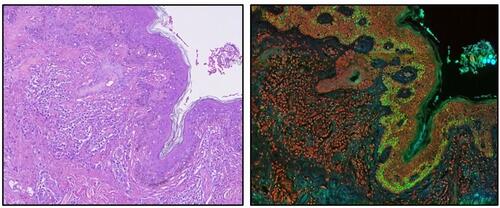Simple Test Helps CF Patients Find Best Treatment
By LabMedica International staff writers
Posted on 06 Dec 2017
Individuals with cystic fibrosis (CF) suffer from abnormal secretions in multiple tissues, including the lungs, pancreas, liver, and intestine, leading to mucus stasis and obstruction. Several cutting-edge treatments have become available in recent years to correct the debilitating chronic lung congestion associated with CF.Posted on 06 Dec 2017
People develop CF because they do not have a functioning version of the cystic fibrosis transmembrane conductance regulator (CFTR) gene, but the condition, which involves the buildup of thick, sticky mucus in the lungs, is tied to more than 2,000 genetic mutations. A person's specific combination of mutations affects both the severity of the disease and how well the patient responds to treatment.

Image: A confocal fluorescent microscopy of living nasospheroids developed from a cystic fibrosis patient\'s nasal tissue (Photo courtesy of the University of North Carolina).
A collaborating team of scientists led by those at the University of North Carolina at Chapel Hill (NC, USA) collected nasal epithelial cell from nine control subjects and three CF subjects with known genotypes. Cells from curettage or brushing were processed and propagated. Nasospheroids were fixed in freshly prepared 4% paraformaldehyde in PBS for 10 minutes at room temperature, centrifuged at 25 g, embedded in Richard-Allan Scientific HistoGel, and embedded in paraffin.
Histological sections were viewed on a phase contrast inverted microscope. Immunofluorescent labeling of CFTR was performed and confocal microscopy imaging completed on a FV1000 confocal microscope system with environmental chamber. The results suggest growing nasospheroids from nasal samples could provide a quick screening method to determine how a patient's cells react to different CFTR drugs. This testing approach could offer patients a welcome alternative to rectal biopsy. It might even be more reliable from a screening standpoint because the drugs are able to interact directly with the right parts on the outside of the nasospheroids, rather than having to enter the spheroids as required with the rectal biopsy method.
Martina Gentzsch, PhD, an assistant professor and senior study author, said, “It is a relatively simple procedure that doesn't require any anesthesia and uses a brush that costs a few dollars. The spheroids form quickly in just a few days without much manipulation. It has many advantages, not only because patients should be able to get results really quickly, but also because our model is much more accessible to drugs for testing than the other existing models.” The study was published on November 16, 2017, in the Journal of Clinical Investigation Insight.
Related Links:
University of North Carolina at Chapel Hill













